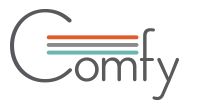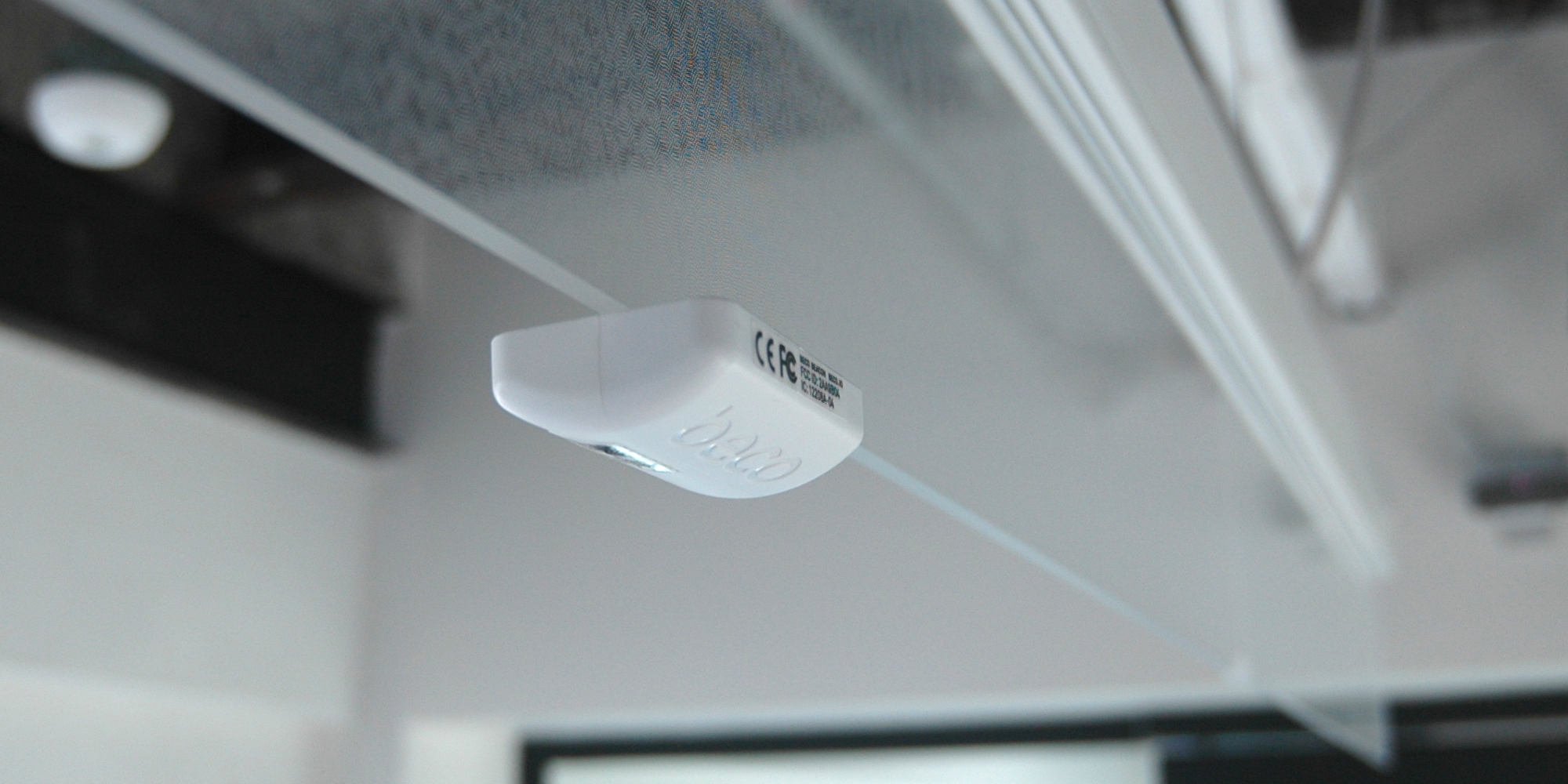Given the reality of rising real estate costs and low space utilization, leading corporate executives are turning towards IoT-enabled workplace tech to get more productivity from the people and space they already have. Occupancy sensors, particularly when combined with workplace experience apps, are a popular option for real estate teams interested in using real-time data to both enhance the employee experience and to better inform workplace decisions. But while some sensor types have been around awhile, the landscape has evolved substantially in recent years. How do you choose which sensors make the most sense for your workplace?
At Comfy, we’ve dug in deep on the occupancy sensor landscape over the past year, as we team up with our Works with Comfy partners and others to optimize our own workplace experience at our Oakland-based HQ. We’ve also advised many of our clients on how to choose a sensor vendor, and in the process we’ve gathered valuable intel on which sensors make sense for various workplace needs.
With help from our infographic below, we’ll walk you through our take on today’s occupancy sensor landscape and share our tips for how to choose the right sensor for your needs.

Click to enlarge inphographic.
1. Consider your goals.
We’ve had countless conversations with clients about the goals and needs behind why they’re exploring sensor technology. Ultimately, we’ve found that regardless of the type or size of the company, real estate leaders are trying to address one of three main goals:
- They want to make sure meeting rooms are used effectively;
- They want to ensure that individual desks and workspaces are used effectively; and/or
- They want to make sure that the relative mix of these spaces—from size capacity to space type—matches employee preferences.
For example, real estate leaders who find themselves in a consolidation phase and eager to offload space quickly, the primary goal might be to understand which spaces are being underutilized and could be sold off or subleased. Meanwhile for larger clients in hyper-growth mode where it’s nearly impossible to keep up with space demands, it’s critical to understand which existing spaces have the potential for increased density. At our own growing Comfy HQ, we’re using sensors to better understand how our existing space and resources are used (i.e., how often do people use desks with monitors? How often do people use the soft seating areas vs. the open collaborative areas?) so that we can apply these learnings as we expand.
Next, we recommend that clients consider the timeframe for that goal—is it near- or medium-term? How do you anticipate your workplace evolving? Installing one type of sensor today without consideration of the future use case may mean you’ll find yourself ripping out the system in five years, only to replace it with something else.
2. Understand your data needs.
Once you’ve got a solid handle of your target goal and timeframe, you can now begin to think about what type of data is necessary to solve that need. What level of granularity do you really need?
Is occupancy at the room-level sufficient? Or do you require data at a more granular level, and does that data need to expand beyond presence to include people count as well? Are you interested in better understanding occupancy data in an enclosed space like a small or medium room, or are you curious about multiple hotspots within a broader open area?
For example, a company in consolidation-mode may be primarily interested in aggregate space utilization and may not need to know the specific count of people in a space, or at a desk-level. On the other hand, here at our growing Comfy HQ, we care about the specific number of people using specific types of workspaces, and rely on that data to decide whether to reconfigure unpopular spaces as we grow.
As we’ll see, granularity comes with added cost and complexity. But make sure you’ve figured out why you’re investing in this technology before jumping to the most complex model.
3. Match your needs to sensor types.
Occupancy sensors tend to fall upon a spectrum; the more sophisticated sensors tend to deliver a more granular level of data, but often come at a higher cost. There are certainly trade-offs for each, but aligning your goals and data needs to the specific level of sophistication you’re seeking will help you choose a sensor type that will serve you now and into the future.
Let’s walk through some of the options.
Vibration sensors
On the less sophisticated side, vibration sensors detect presence via accelerometers within the sensor. While fairly cost-effective, these sensors can be limited in scope; they’re typically most useful in soft seating areas, like couches or seated phone booths. As such, they tend to meet a more specific use case.
For example, here at Comfy, we have a large percentage of our second floor dedicated to huddle area seating. As our overall people count grows, our office space must adapt accordingly. To manage that, we’re using vibration sensors and data from the Comfy app to help us determine which areas are most popular, and whether we should consider repurposing this valuable space with alternate space types.
Passive Infrared (PIR) motion sensors
PIR sensors have been around for decades, and have evolved over the years into a cost-effective option for measuring occupancy.
According to industry leader (and our own Works with Comfy partner) Lutron, “PIR sensors determine when a space is occupied by detecting the heat (in the form of infrared energy) from people moving within a space.” These types of sensors are called “passive” because they receive infrared light. PIR sensors tend to be binary, meaning they can make a basic determination about whether a detection area is occupied or not. For example, at Comfy, we use PIR sensors to determine if a room (through an overhead PIR sensor) or a desk (with an under-the-desk PIR sensor) is either occupied or vacant. We then use this data to help employees find and book available rooms in real-time through our app. One specific upside of PIR sensors? Privacy’s a non-issue, given the binary nature of the data they provide.
Imaging sensors
On the more sophisticated (and expensive) side of the spectrum, we have imaging sensors, which capture distinctions in light and convert them into electronic signals, similar to a camera. Vendors then apply computer vision as needed for greater data granularity. These sensors typically process inputs on-sensor; images are not stored (though privacy can be a general concern). Compared with vibration or PIR sensors, imaging sensors offer greater flexibility and more granular data; for instance, they’re able to collect data at the individual people count level, and also measure occupancy within multiple, predefined areas within the sensor range. This has been particularly helpful to our workplace team here at Comfy, where we've installed overhead imaging sensors to detect occupancy for multiple desk areas, in a ratio of one sensor per eight desks.
And beyond...
Beyond occupancy detection, many sensor vendors are building capability for additional functionality, such as beacon-based indoor positioning. For instance, if you’re considering location-based services, we’d recommend seeking a sensor solution that has this capability built in, like a Bluetooth Low Energy (BLE) beacon. And it doesn’t stop there; detection of presence lays the groundwork for future use cases for workplace intelligence.
The ultimate value that occupancy sensors can bring to your organization, immediately and in the long-term, is actionable data. If you’re not leveraging the data to enhance the experience for your employees, you’re missing out. When paired with Comfy, real-time data from (any type of) occupancy sensor is put to immediate use within employee-facing tools to provide a better overall experience. How much time do your employees waste trying to find and book rooms right before a meeting? Comfy can read the space occupancy (from a free-standing sensor, for instance) and use that data to “free” up spaces in real-time, empowering employees with the ability to find the resources they need, when they need them. At the same time, workplace managers are able to get better visibility into these interactions and dynamics, in order to make more informed decisions about the space (and improve overall utilization and design).
The world of occupancy sensors will continue to evolve, as will the workplace app landscape. We’d be happy to talk with you about your specific workplace goals, and how Comfy can help you get more from your sensor technology investment—chat with us today.

 Request a Demo
Request a Demo






